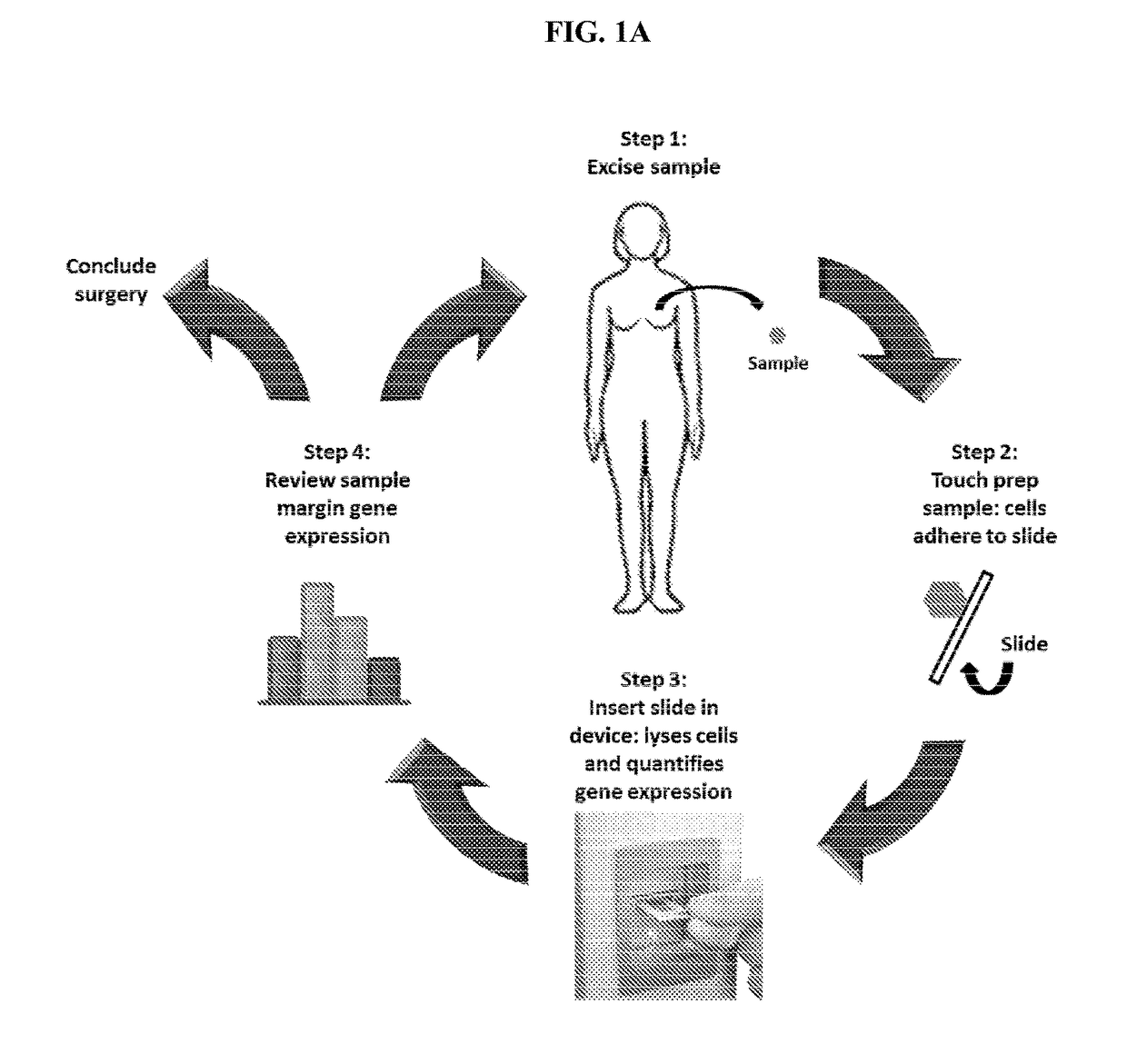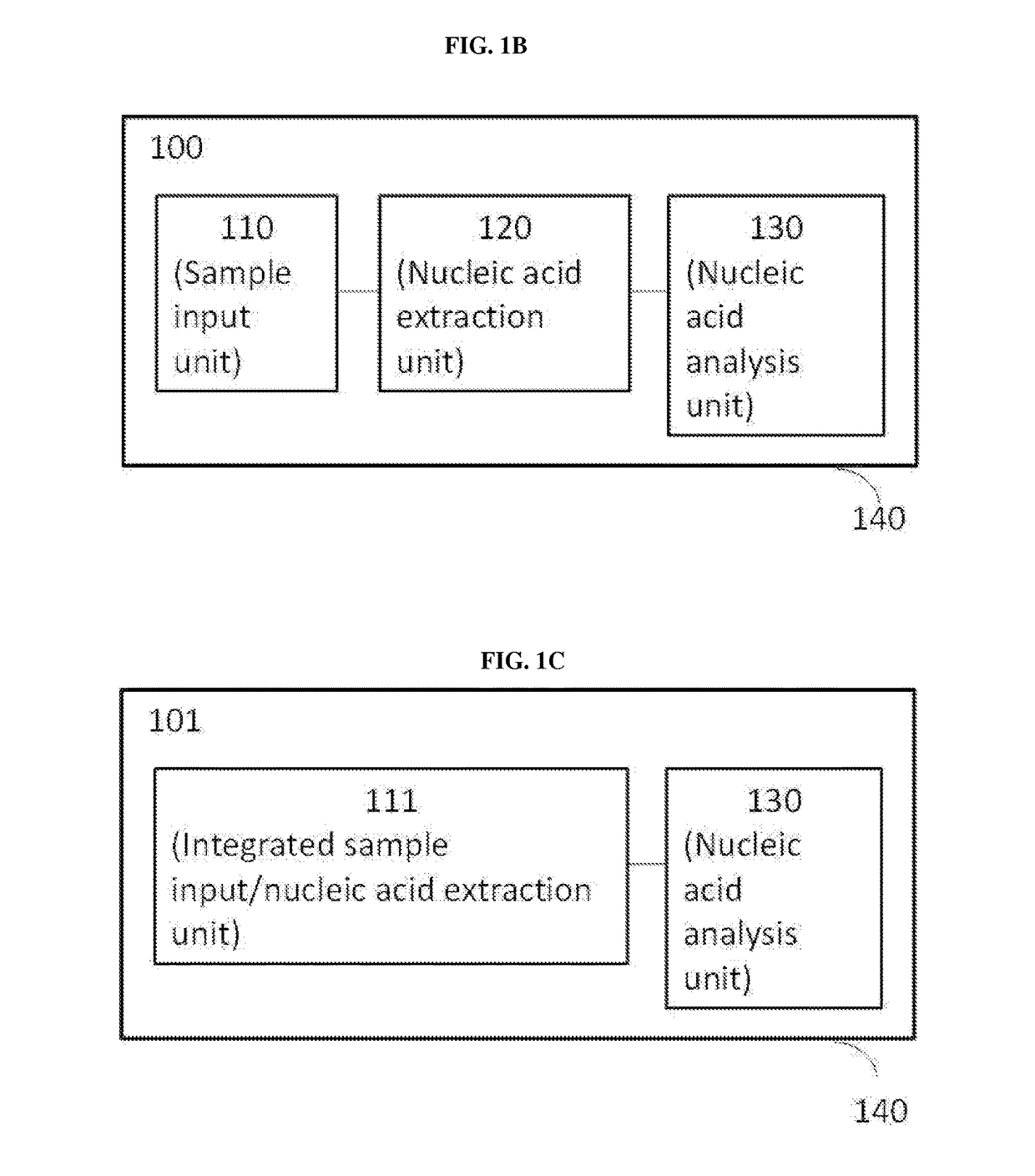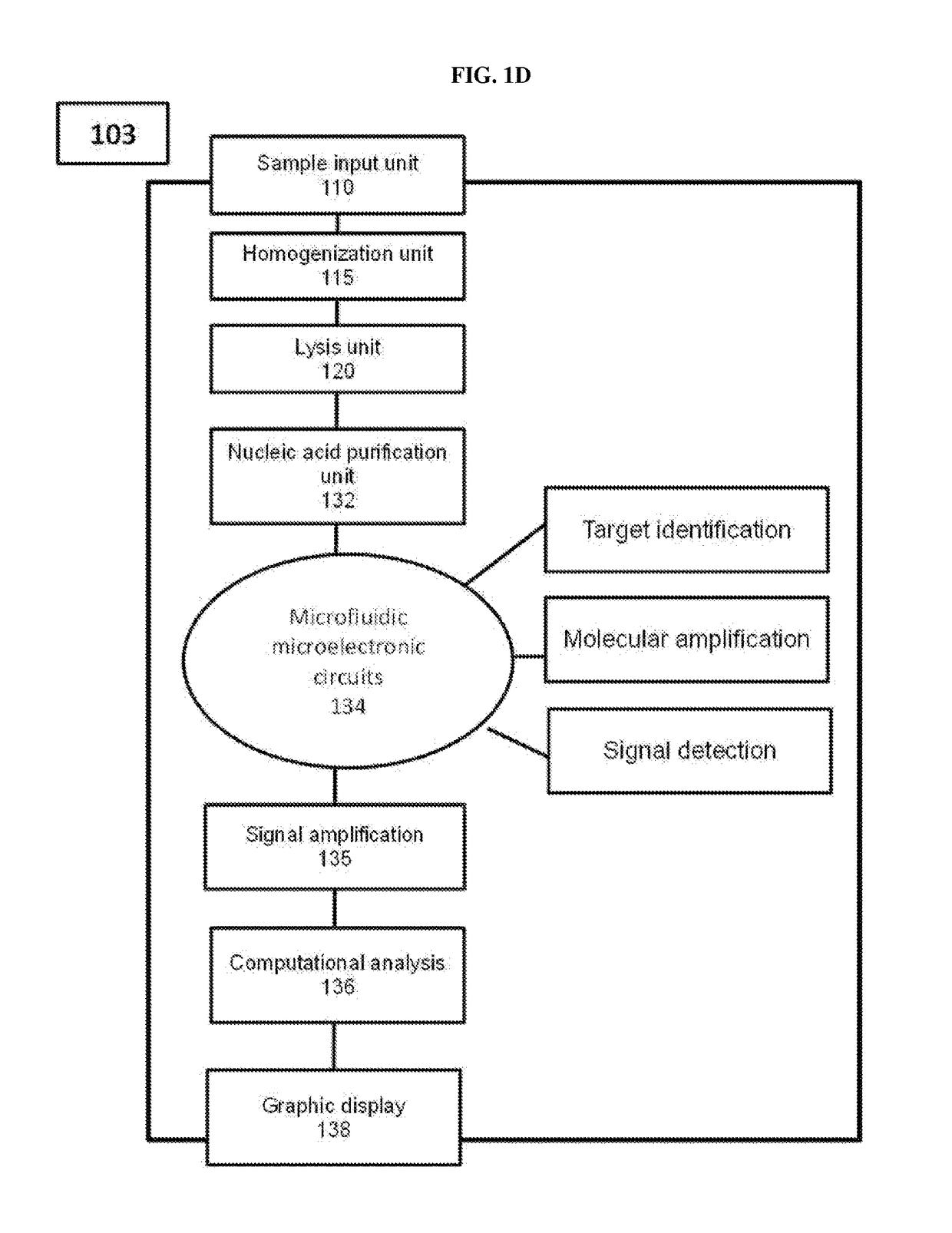Methods, compositions, and devices for rapid analysis of biological markers
a biological marker and composition technology, applied in the field of biological marker compositions and devices for rapid analysis, can solve the problems of difficult molecular analysis in surgical applications, huge time pressure on the return of tests performed during surgical procedures, and the most difficult to analyze outside clinical labs without specially trained personnel, so as to promote the adhesion of cellular specimens
- Summary
- Abstract
- Description
- Claims
- Application Information
AI Technical Summary
Benefits of technology
Problems solved by technology
Method used
Image
Examples
example 1
and Rapid Lysis of Complex Solid Tissue Samples
[0298]Sonication of complex solid tissues was optimized using commercially available ground bovine samples. 20 mg of tissue were treated with mild sonication on an ST-30 instrument with radio frequency power set at 36 volts, a duty cycle of 33% (⅓ on, ⅔ off), and a frequency of 120 Hz (which was optimized to water as the medium). Additional experiments used higher-power sonication performed with 100 volts on a ST-100 instrument (data not shown). The ST-30 and ST-100 instruments use bulk lateral ultrasound (BLU™) to generate shear forces directed towards the samples. Sonicated samples were compared to samples that were incubated in a 55° C. water bath for 1.5 hours according to the protocol provided with the commercial ChargeSwitch™ DNA purification kit. All samples were incubated in Invitrogen ChargeSwitch™ Lysis Buffer (L13) buffer according to the manufacturer's protocol.
[0299]The standard protocol calls for incubation of tissues in 2...
example 2
and Real-Time PCR Analysis of Nucleic Acids Obtained by Sonication
[0300]Nucleic acid samples were prepared via the BLU sonication methods described in Example 1. BLU-sonicated samples were compared to nucleic acid samples extracted by the standard Invitrogen protocol described in Example 2. Primers designed to distinguish bovine vs. gallus cytochrome B were used in a PCR assay and an isothermal loop-mediated amplification assay. For the end-point PCR assay, Kapa 2G Robust master mix assay was used according to the manufacturer's instructions. PCR amplicons were visualized on agarose gels, post-stained with GelRed (see FIG. 22). There was no detectable difference in amplification of DNA that was extracted using sonication and DNA extracted using the commercial chemical and enzymatic purification protocol (no difference, data not shown). These data establish that DNA extracted using sonication provide intact substrates for nucleic acid amplification.
example 3
Sample Lysis and Nucleic Acid Yield from Solid Tissue Samples
[0301]Incubation time required for sample lysis and nucleic acid purification is decreased from 60 min to 5 min) and yields are increased by incubating ChargeSwitch™ beads at the recommended temperature during vigorous shaking. Samples were incubated at 55C on an Eppendorf thermal shaker at max rpm. All samples were incubated in Invitrogen ChargeSwitch™ Lysis Buffer (L13) buffer and purified using ChargeSwitch™ magnetic beads according to the manufacturer's protocol. These experiments discovered a method to increase the lysis step for complex solid tissues prepared using the ChargeSwitch™ method. The standard protocol yielded 10.2 ng / ul of DNA from 20 mg of tissue after a 1.5 hour incubation at 55 C. In contrast, thermomixing yielded a mean of 10.0 ng of DNA / ul from 20 mg of tissue after only 10 minutes. Additional thermomixing (e.g. 20 min) also yielded 10.8 ng DNA / ul, indicating that the system (e.g. number of beads) rea...
PUM
| Property | Measurement | Unit |
|---|---|---|
| total volume | aaaaa | aaaaa |
| total volume | aaaaa | aaaaa |
| total volume | aaaaa | aaaaa |
Abstract
Description
Claims
Application Information
 Login to View More
Login to View More - R&D
- Intellectual Property
- Life Sciences
- Materials
- Tech Scout
- Unparalleled Data Quality
- Higher Quality Content
- 60% Fewer Hallucinations
Browse by: Latest US Patents, China's latest patents, Technical Efficacy Thesaurus, Application Domain, Technology Topic, Popular Technical Reports.
© 2025 PatSnap. All rights reserved.Legal|Privacy policy|Modern Slavery Act Transparency Statement|Sitemap|About US| Contact US: help@patsnap.com



